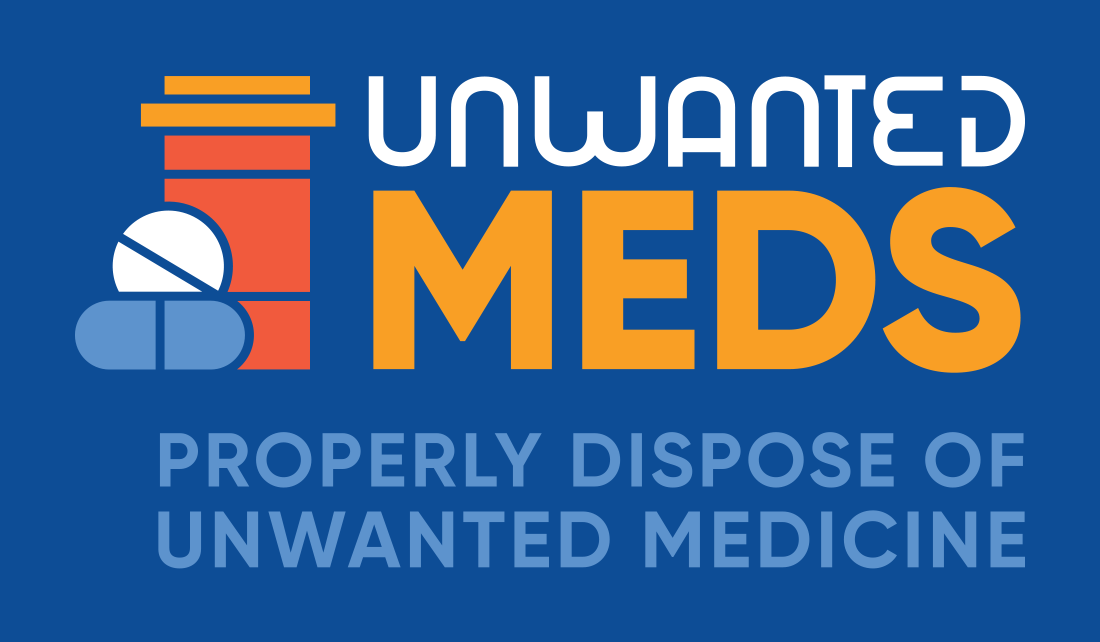
For more than a decade, Illinois-Indiana Sea Grant’s (IISG) UnwantedMeds.org has helped people safely dispose of expired and unused medications, keeping more than 330,000 pounds of pharmaceuticals out of landfills, waterways, and septic systems. Now, just in time for DEA National Takeback Day on October 25, the site is getting its finishing touch, with an interactive step-by-step guide that walks users through how to properly dispose of different types of medicine. In addition, users can also find two new educational brochures designed to help veterinarians, pet owners, and livestock farmers prevent accidental poisonings and pollution.
A Smarter Way to Dispose of Medicine
The new step-by-step guide makes it easier for users to find the right way to dispose of pills, liquids, creams, inhalers, sharps, or transdermal patches. The guide works like a simple decision tree, asking a few short questions about the type of medication and whether a take-back program is available nearby.
“It can be really tricky to know what to do with certain types of medicine,” said Sarah Zack, IISG Great Lakes contaminants specialist. “Different programs have different rules, and our goal with this tool is to take some of the guesswork out of it. You answer a few questions, and we direct you to the best disposal option—all without ever leaving the site.”

The Unwanted Meds step-by-step guide helps users navigate the complexities of proper disposal of medication.
The tool integrates with the site’s interactive map of take-back programs, allowing users to locate nearby drop-off sites directly within the guide. It also provides information on starting new collection programs in communities that don’t yet have them.
New Educational Materials for Veterinary and Agricultural Audiences
Alongside the new website feature, IISG and the American Veterinary Medical Association (AVMA) have released two updated brochures in the Prescription for Safety series. One is geared toward companion animal owners, and the other toward small livestock farmers.
The pet owner brochure details how to properly store and dispose of veterinary and human medications in the home, emphasizing the dangers of accidental ingestion and environmental contamination. It explains how common take-back programs work and offers alternatives when such programs aren’t available.
The livestock-focused brochure provides similar guidance tailored for small farms, outlining safe storage and disposal practices for veterinary drugs commonly used with cattle, goats, pigs, and other animals. It’s a new audience for IISG’s unwanted medicines work—one that Zack says the team is eager to engage.
“We’re really curious to see how farmers respond to these materials,” Zack said. “They often administer medications themselves, sometimes in bulk, so we want to make sure they have the information they need to protect their families, livestock, and the environment.”
It can be challenging for veterinarians when clients bring in unwanted medications, some of which may not legally be accepted or easily disposed of. By educating animal owners directly, these resources aim to ease the burden on veterinarians and empower clients to dispose of medicine properly.
“In this era where we are learning so much about antimicrobial resistance and the impact that improperly discarded medications have on our environment, these brochures can help veterinarians educate their clients on ways they can be responsible stewards of medications in their care, “ said Warren J. Hess, DVM, Associate Director of the Division of Animal and Public Health at the American Veterinary Medical Association.
- Click here to download Prescription for Safety: How to Dispose of Unwanted Household Medicine.
- Click here to download Prescription for Safety: How to Dispose of Unwanted Veterinary Medicine.
Looking Ahead
As access to take-back programs expands through pharmacies, clinics, and law enforcement, Zack hopes these resources continue to bring the program closer to its ultimate goal: a world where safe medication disposal is second nature.
“I hope that in the coming years, there’s no need for this program because everyone already knows how to do this,” she said. “We’re well on our way. You can now find drop boxes in many national chain pharmacies. The easier it is for people to do the right thing, the better off we all are.”
____________________________________________________________________________________________________________________________________
For more information on the proper disposal of unwanted and expired medicine, and how it helps protect public health and our environment, visit UnwantedMeds.Org.

